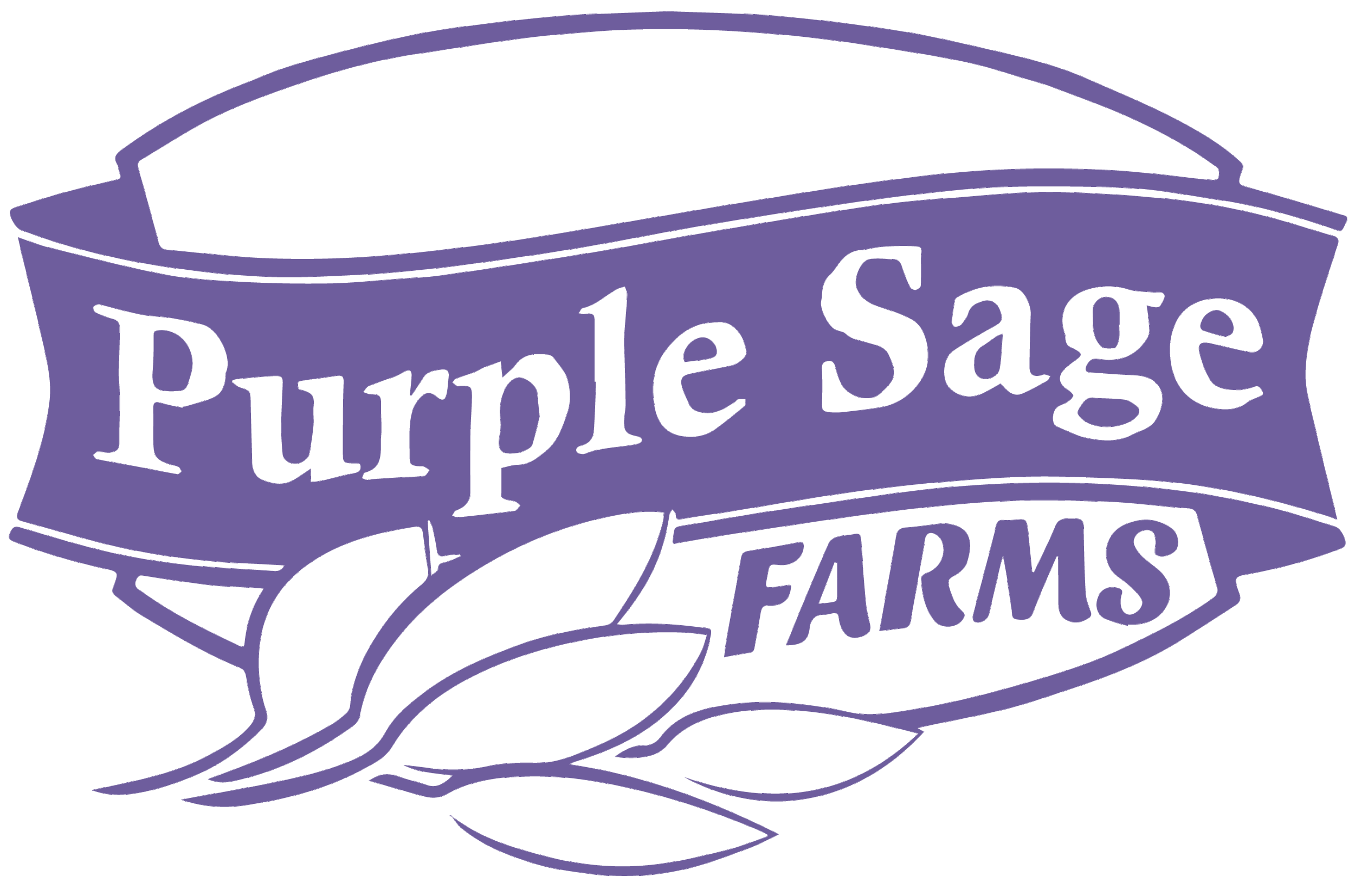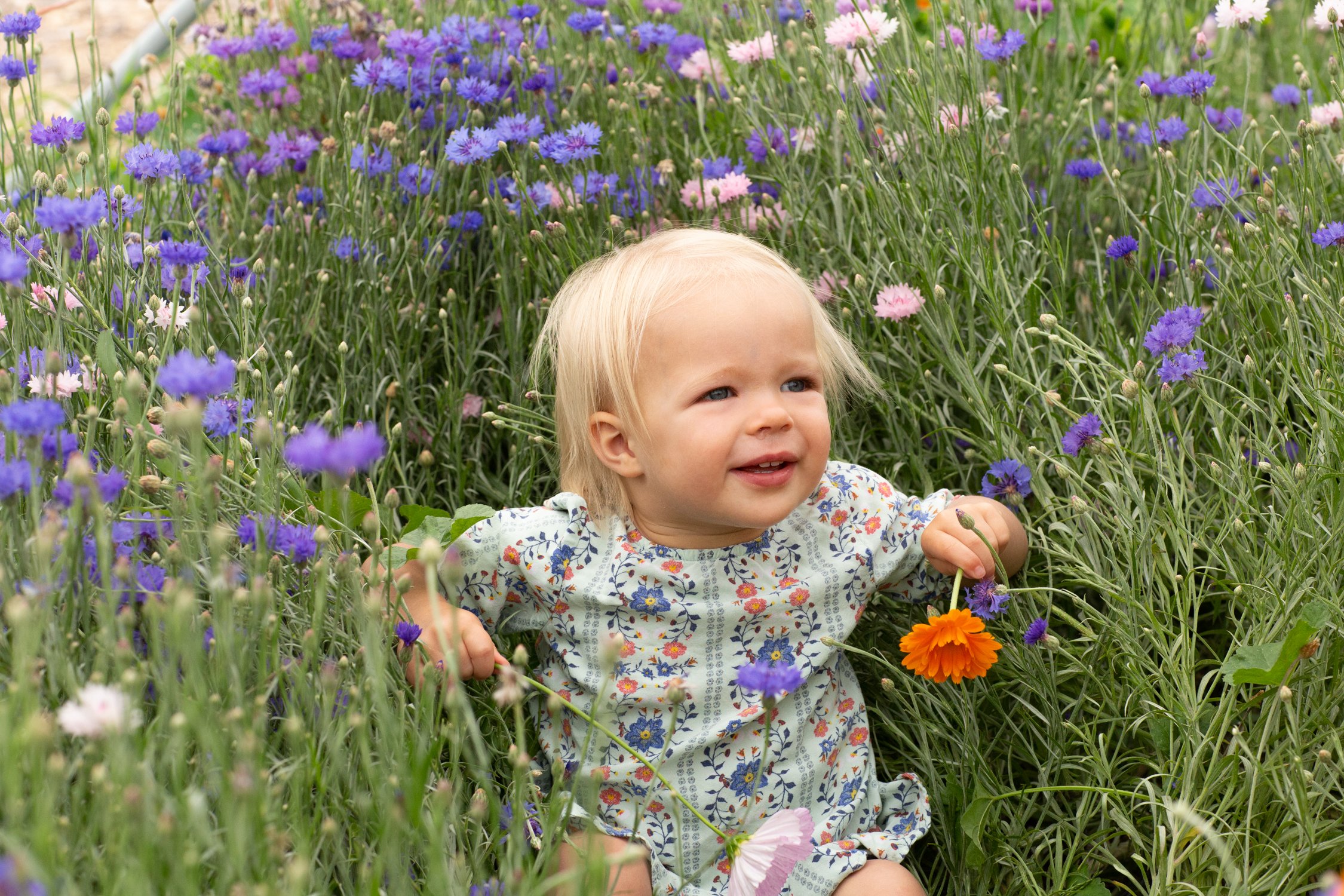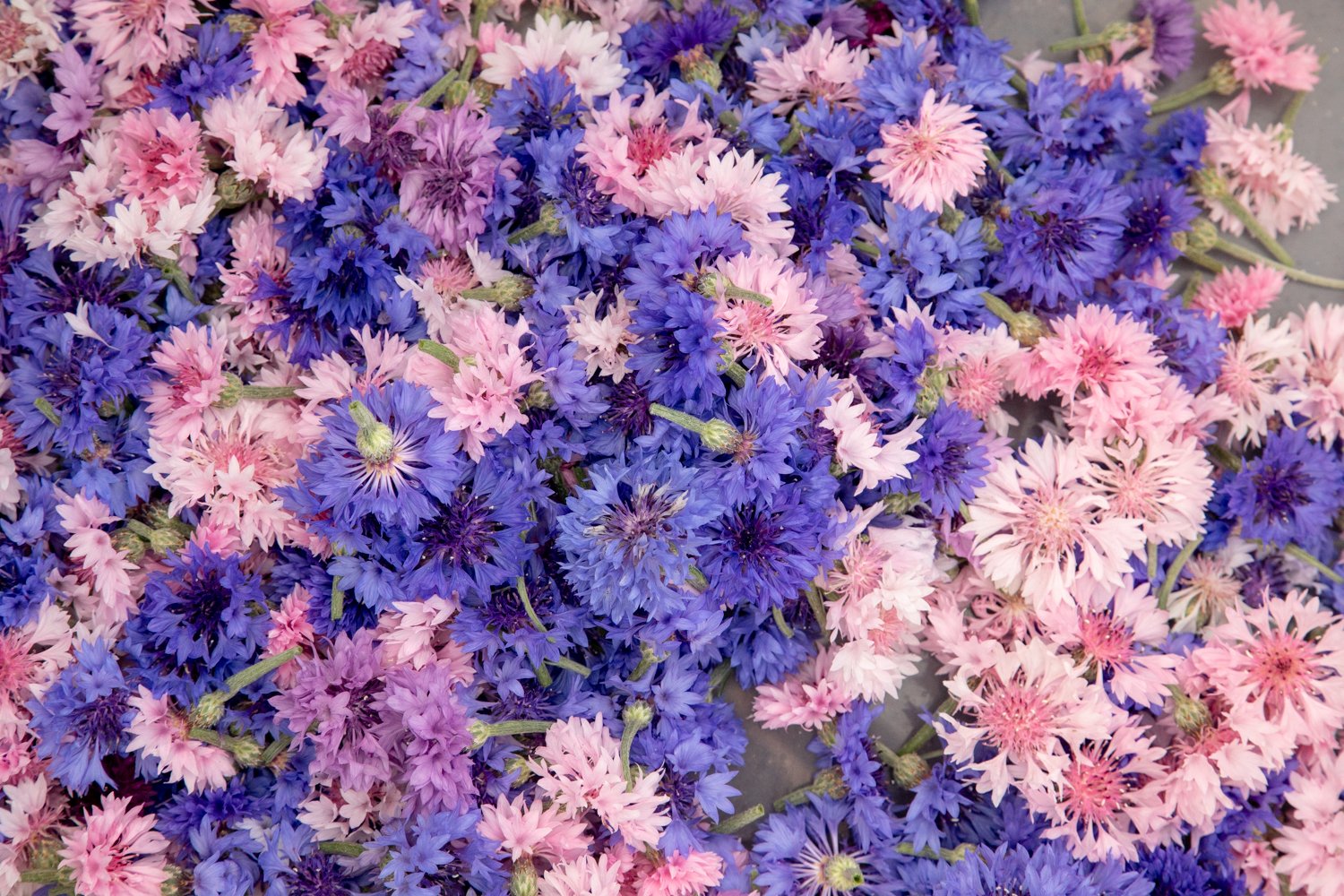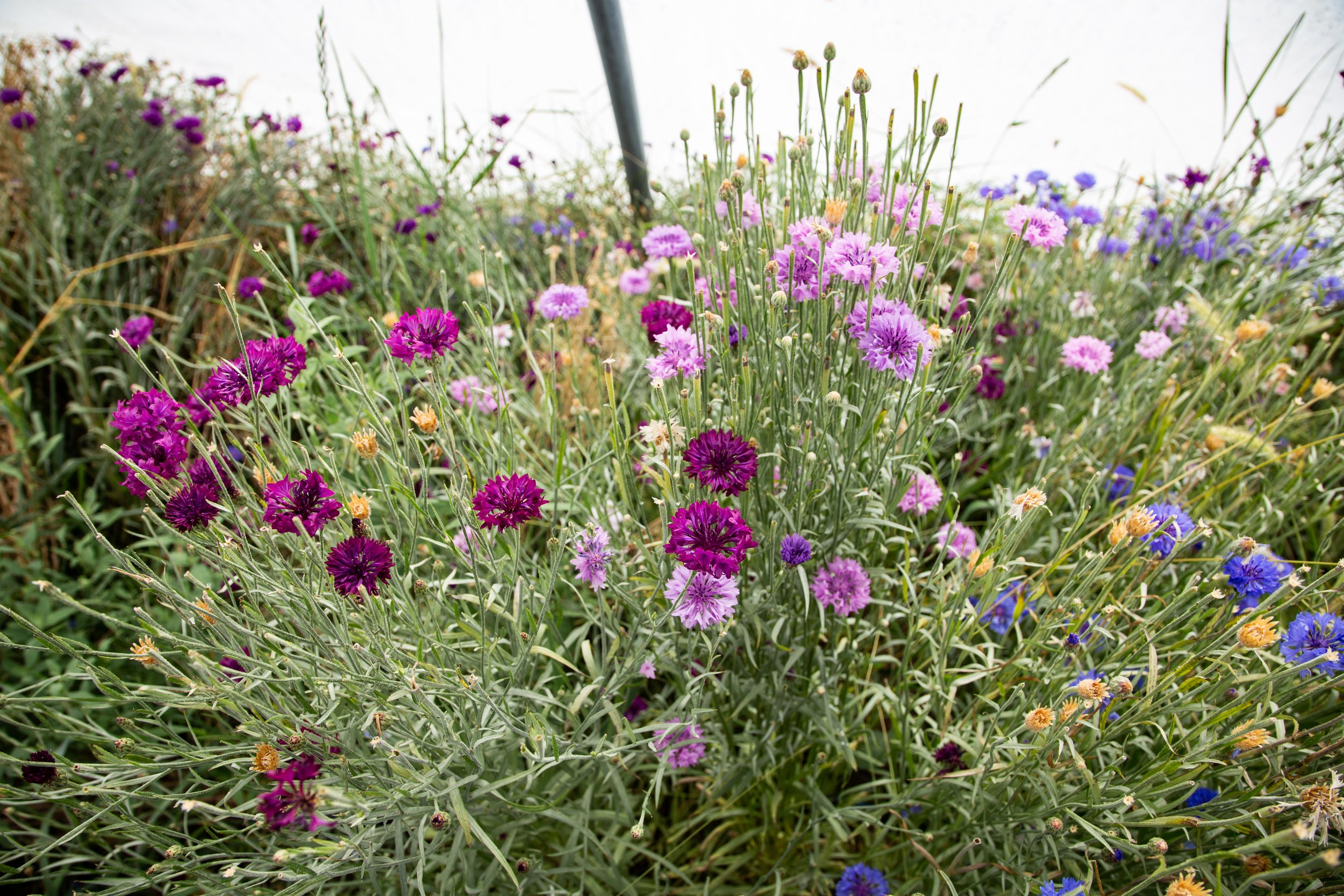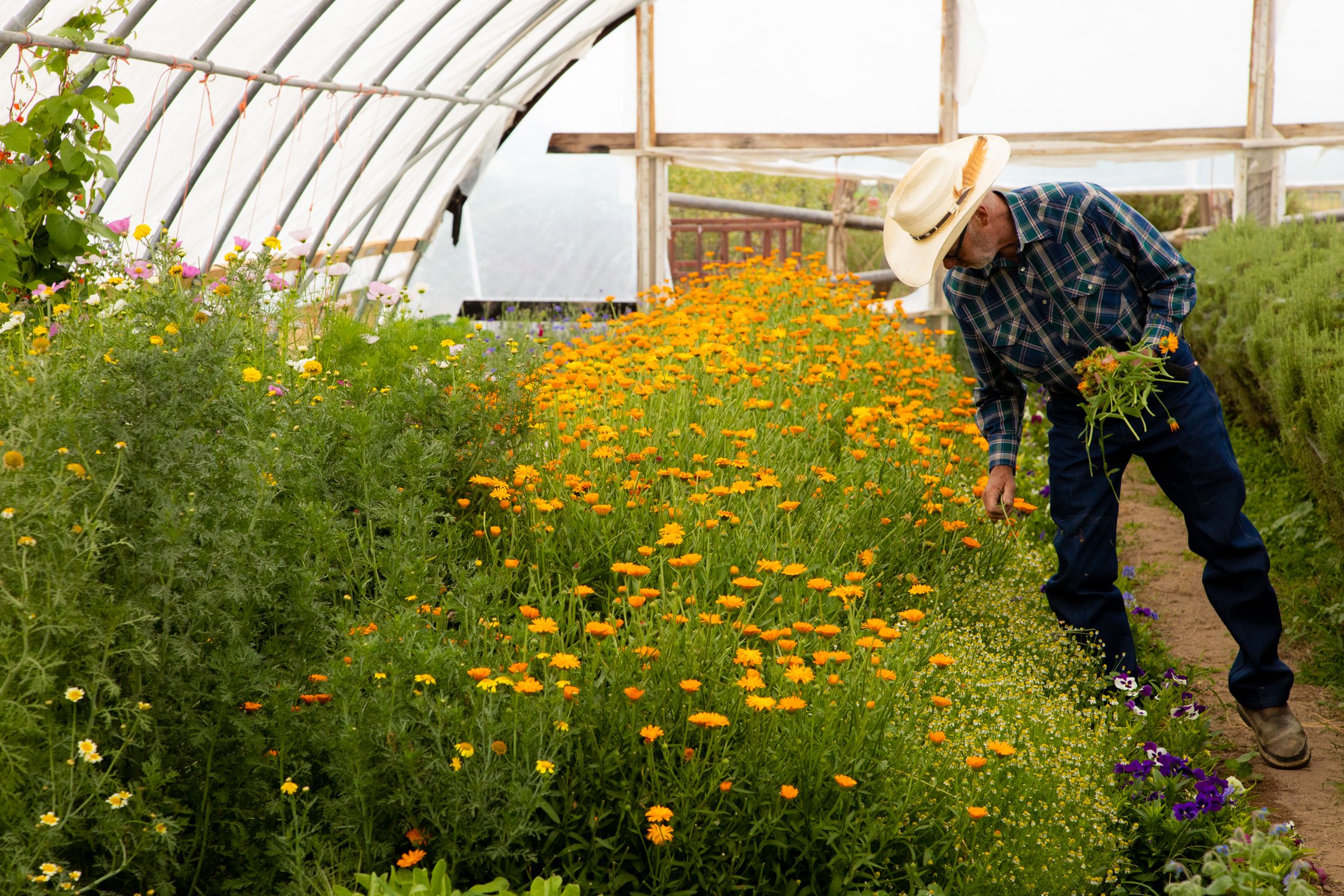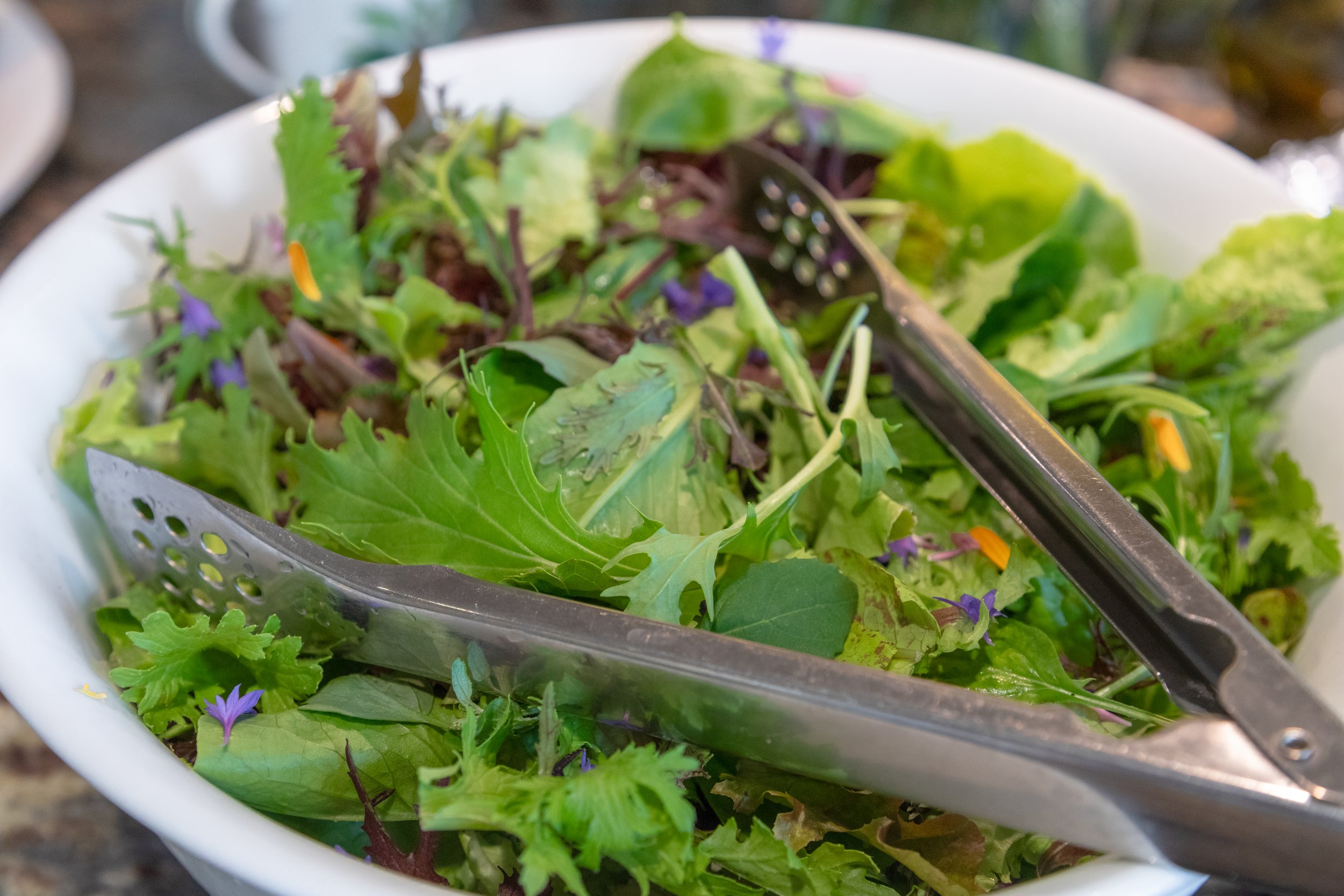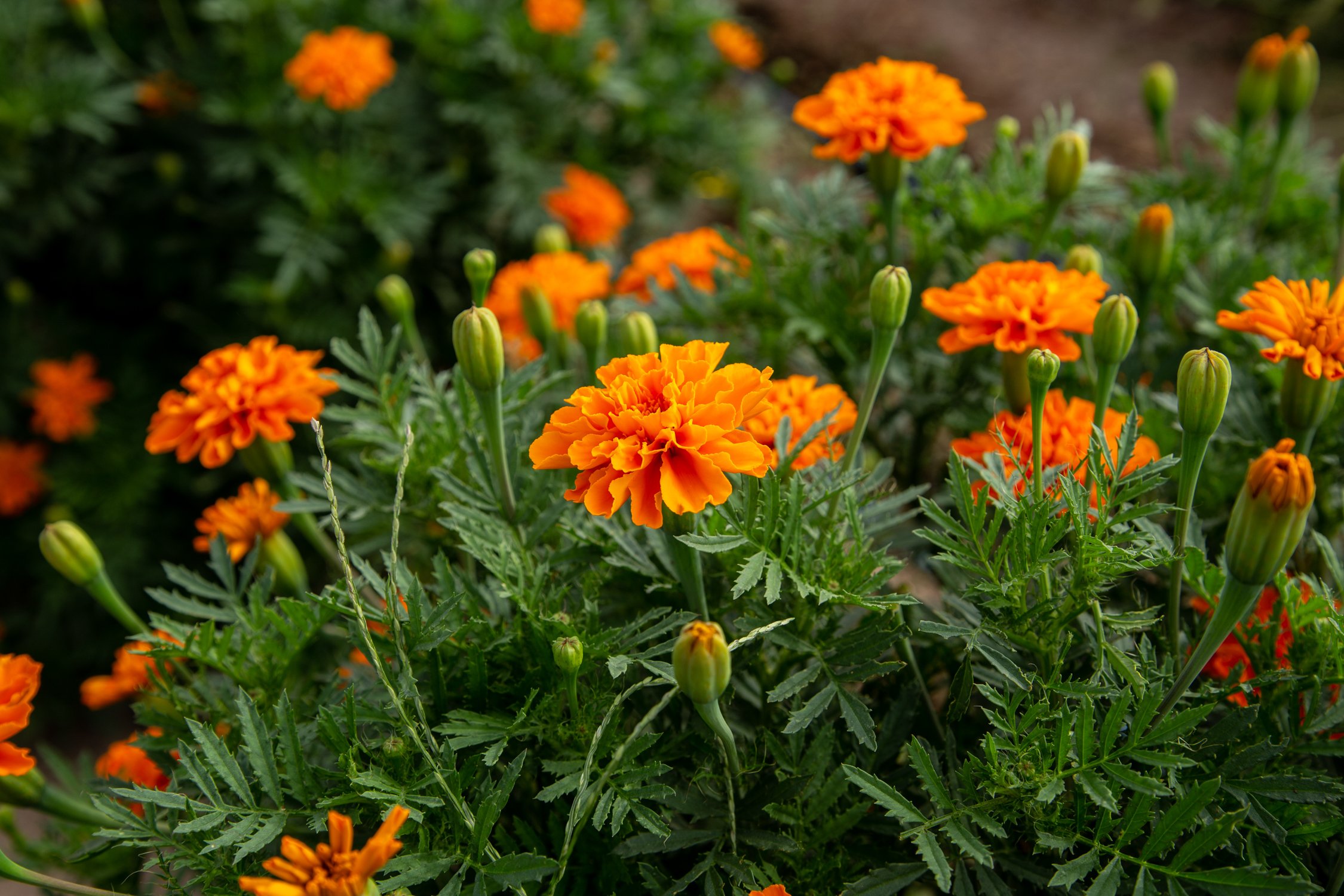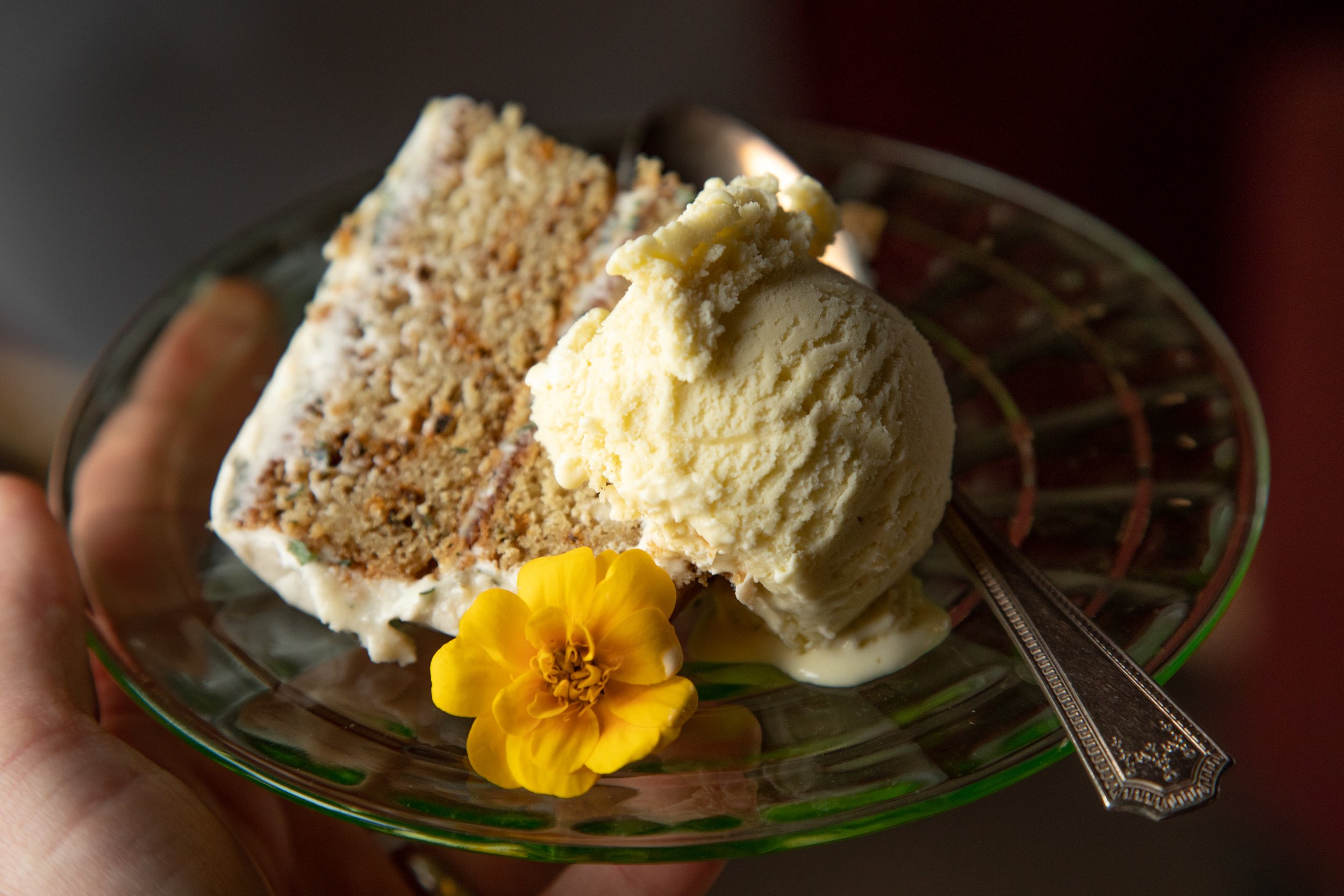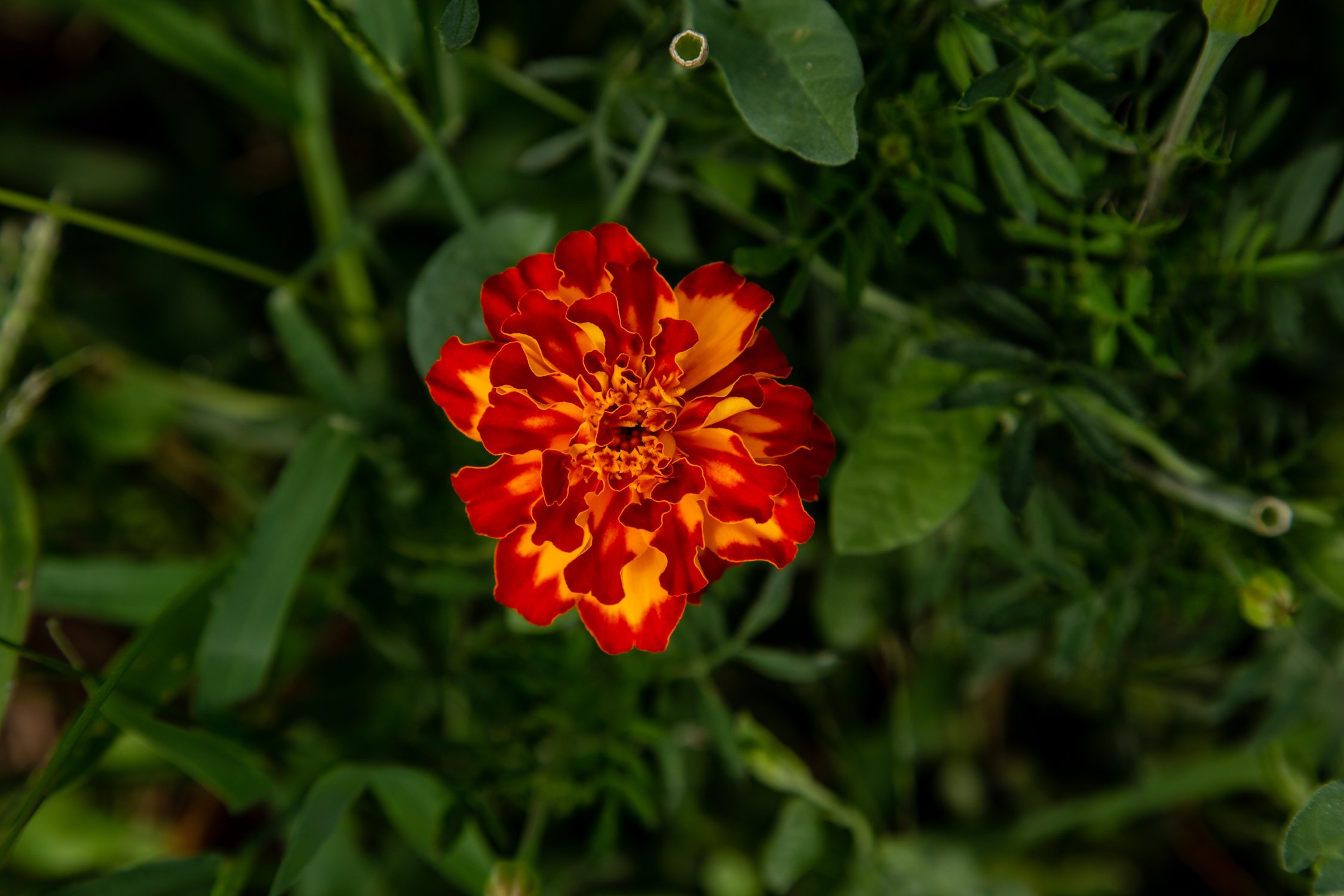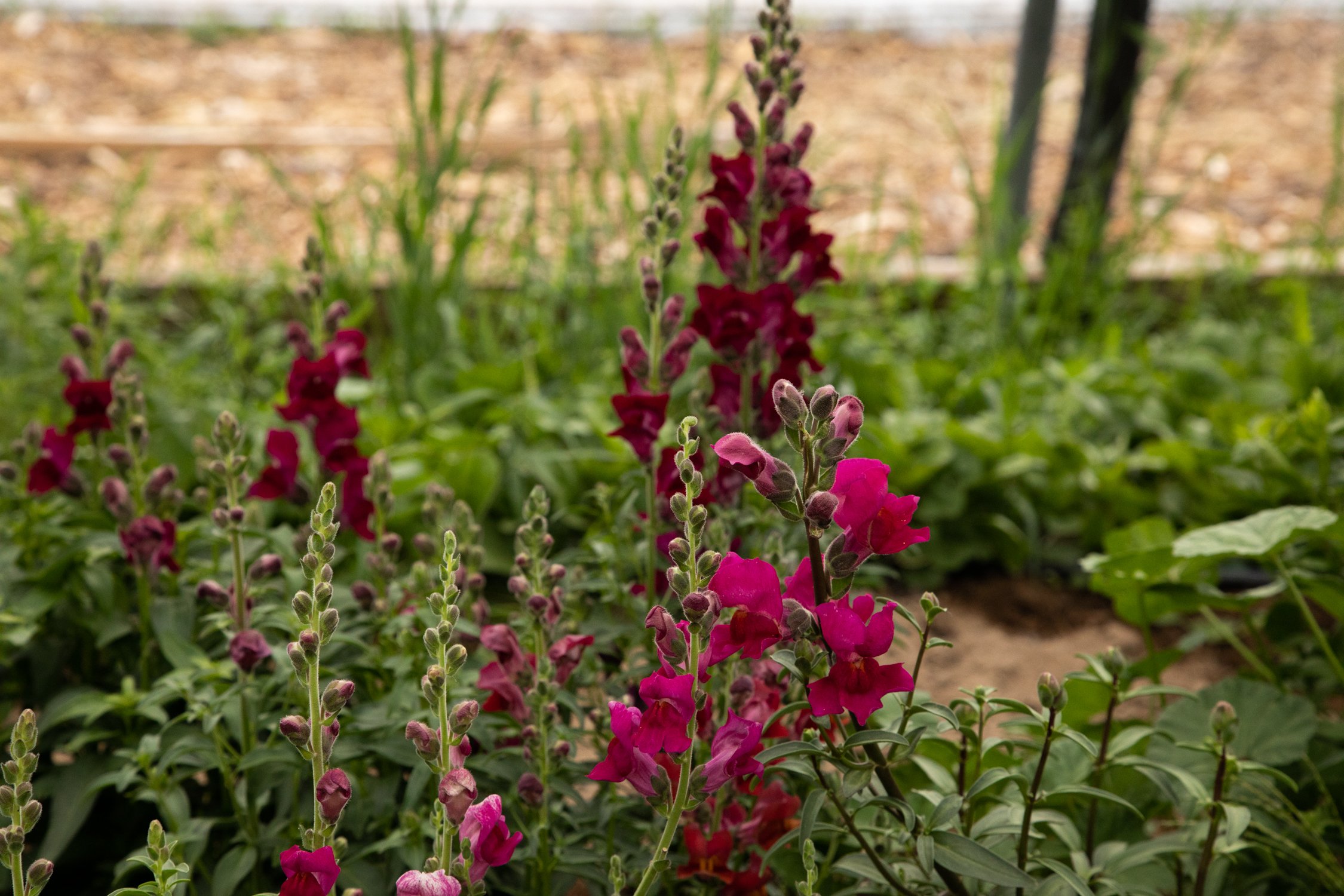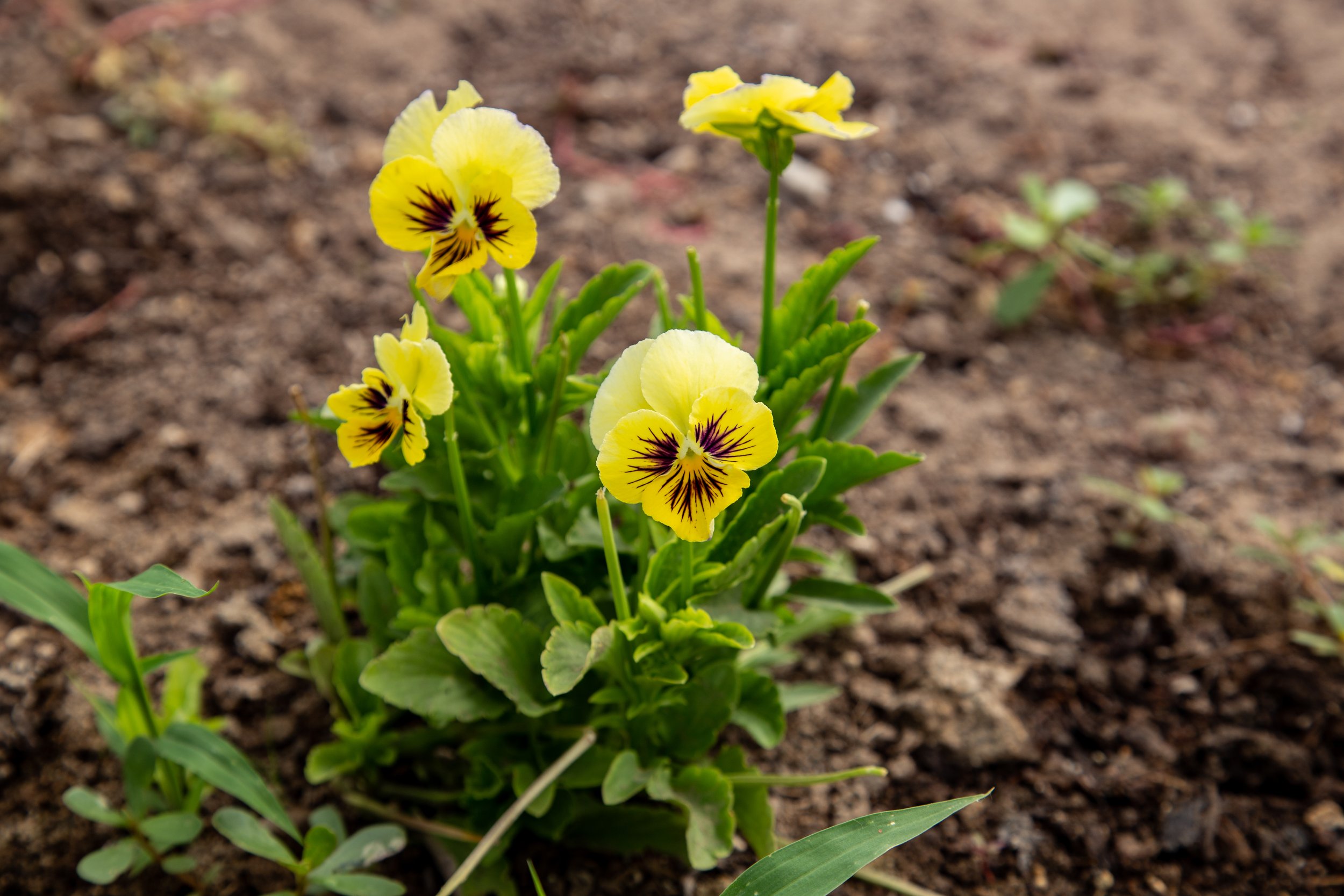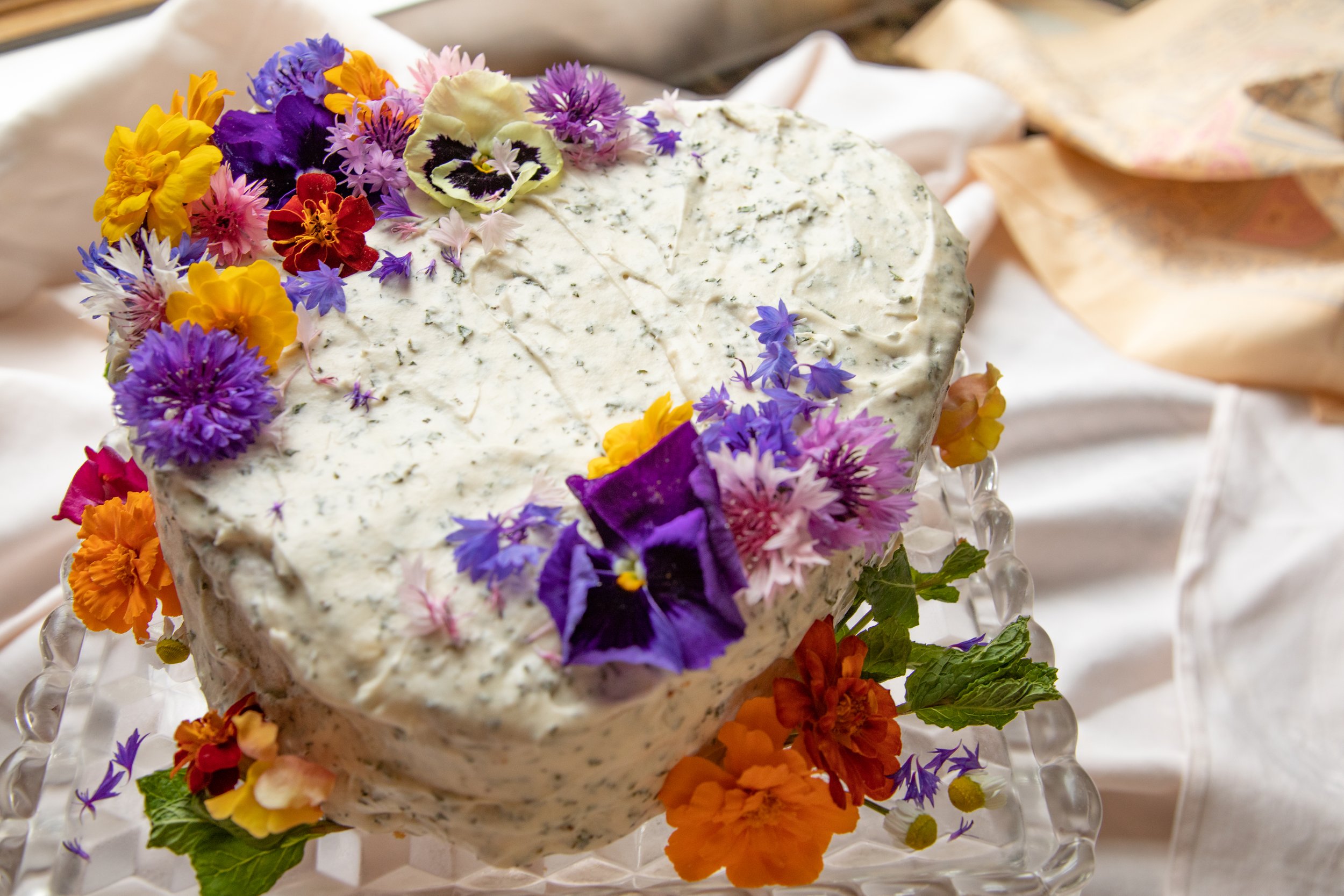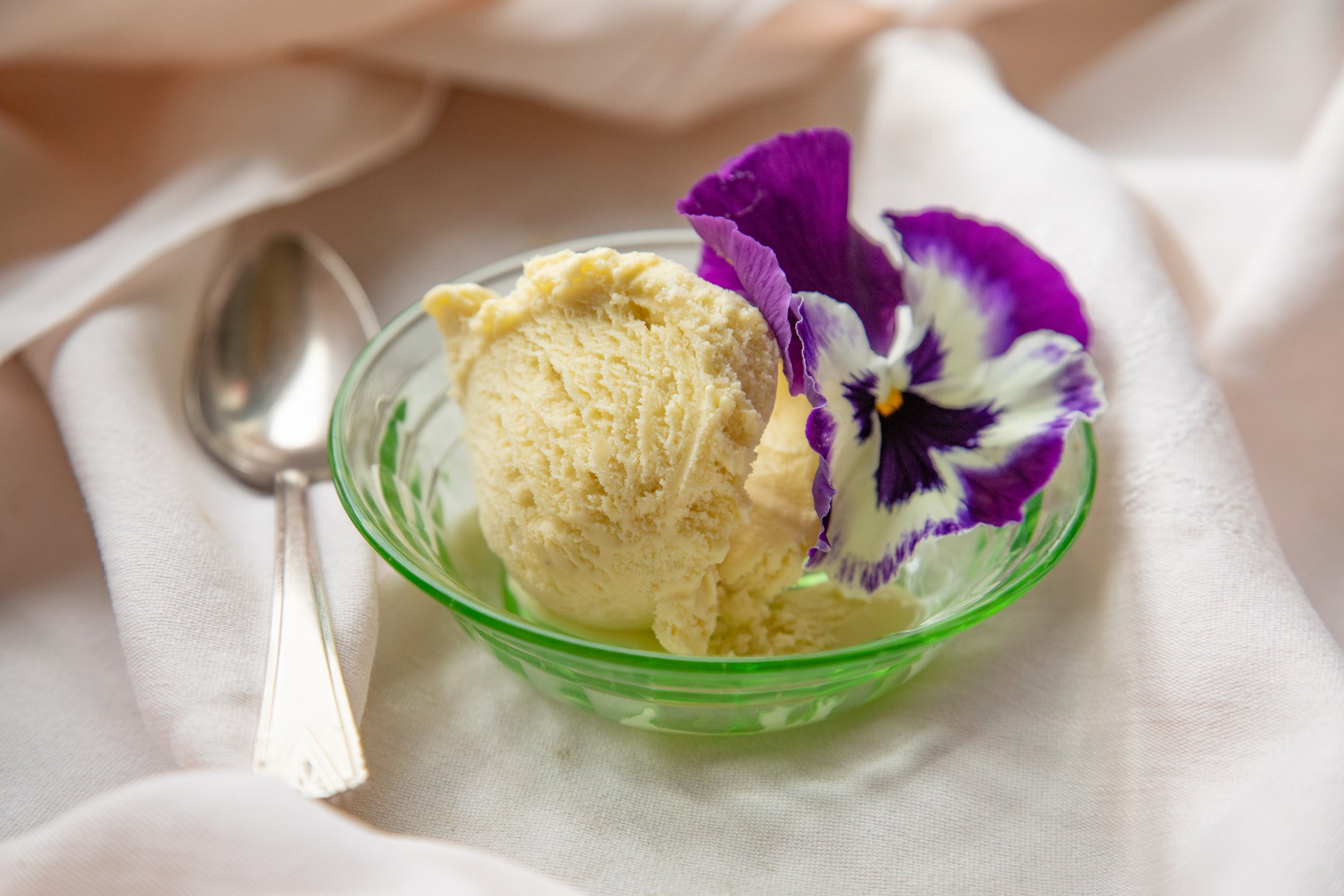Flower Power!
By Tamara Sloviaczek and photos by Arlie Sommer
Spring and summer are the best times for fresh flowers from Purple Sage Farms—now is the time for Flower Power! There’s nothing like a garden, room, or greenhouse full of flowers to bring you joy and good energy. As a child I remember my mom saying she needed something blooming every month so she could always have a bouquet of flowers to brighten her day. At Purple Sage Farms, we too want flowers blooming continually for the pollinators and for fresh blooms to flavor your food and delight your eye.
Certified Organic cosmos, shungiku, carnations, snapdragons, and pea blossoms picked at Purple Sage Farms for the market. Photo by Arlie Sommer
Flowers make food more engaging. Their brilliant colors and geometric design catches the eye and delights. But it’s not all about looks; flowers also add flavor and texture to food, whether it’s the peppery flavor of calendulas, the sweet cucumber taste of the tiny borage bloom, or the mild floral flavor of the velvety pansy. Adding flowers to your dishes wakes up your taste buds and brings beauty to your plate.
Our certified organic edible flowers are grown in our greenhouses and outside fields. The flowers are hand harvested, when temperatures are cooler, for the most vibrant and shelf-stable blooms. This is when they taste their best, have the most nutritional value, and their essential oils are the most abundant and potent.
Here are some of our favorite edible flowers that grow on the farm.
Jackie and Tamara harvest Organic mini roses in the greenhouses. Photo by Arlie Sommer
Mini Roses
Stop, smell, and eat the roses. Yes, roses are edible.No part of this classic bloom is poisonous, so you could technically consume the entire thing, but our favorite part is the plentiful petal which can be fluffed onto salads, sprinkled on soups, or folded into home-made ice cream or cake batter. Float whole fresh mini roses in your summer party punches for a distinguished flare. Add them to your sun tea jar for a colorful, light, and refreshing summer beverage.
The furry borage plant thrives in our greenhouses with tiny purple blooms. Photo by Arlie Sommer
Borage
This versatile herb, with an exquisitely structured blossom, attracts bees and other beneficial insects. The blue and pink flowers taste like an extra-sweet cucumber. Garnish a cool yogurt sauce or an icy cold drink with this geometric gem flower. Layer in spring rolls for an elegant presentation. The leaves and stems are also edible, delicious steamed, like spinach or chard.
Bachelor Buttons
In the Victorian era, English men wore these blue buds on their lapel. If the flower faded fast, it was thought the object of their desire didn’t love them. We love these abundant and resilient flowers!
We also know them as cornflowers and they are considered a weed because they grew prolifically in the corn and grain crops of Europe. This eager plant is also well loved by dyers as a source of blue pigment for painting and dyeing fabrics.
At Purple Sage, we pluck the petals for a fun, multi-color confetti mix that can be tossed into salads or sprinkled on festive hors d'oeuvre trays. The petals also work great in tea blends. Try brewing fresh herb teas in the summer and dried in the winter.
Calendula
Calendulas are often used by herbalists to make natural cosmetics but you can also eat them! These yellow daisy look-alikes are related to daisies and chrysanthemums. Calendulas are sticky to touch and have hairy leaves. Our fingers usually blacken when harvesting these flowers that are packed with essential oils.
The petals have a slightly peppery flavor and are called "poor man's saffron" due to their ability to add a golden hue to foods. Add them to deviled eggs or souffles to enhance the yellow.
The petals of the flowers brighten salads and can usually be found in the Purple Sage Gourmet Salad Mix.
Calendulas are also an excellent addition to your sun tea or your morning brew. This flower is known for its healing powers, loaded with antioxidants and anti-inflammatory properties.
Marigolds
The gold, orange and red, or a combination color blossoms of the marigolds are the star of any garden bed, full of petals and smooth to touch. This aromatic flower is accompanied by long, thin, branching leaves. Their densely packed, easy to pluck petals make them accessible for any home cook.
Add marigold petals to ice cream or a hot dish for extra nutrition and to make life extra special. Chop and mix petals into salad greens, for a slightly spicy kick.
Considered a must-have by many gardeners, plant marigolds alongside your vegetables to ward off pests and attract bees and other pollinators. They are a low maintenance flower and we plant many at the farm, both inside the greenhouses and out in the field.
Marigolds carry a lot of meaning for Latinx cultures. Their pungent fragrance is said to bring souls back to visit living families on Día de los Muertos. Marigolds glow up graves and altars to ancestors every November.
These colorful flowers are also sought after as a pigment for dyes for yarn and fabrics.
Snapdragons
Give your next culinary creation flower power with Snapdragons. The flavor is a pop of sweet with chicory notes. Snapdragons grow in many colors. Their whimsical dragon head shape will bring extra engagement with appetizer plates or cakes.
Stuff the heads with cream cheese or guacamole for a one-of-a-kind bite. Use a pastry tube to put a marble size mixture into the mouth of the Snapdragon.
Use this flower to take your drinks to the next level. Their ability to hold onto a glass also makes them ideal for decorating cocktails and their burst of big color and sturdiness make them well suited to be frozen into ice cubes.
Pansies
The common pansy is also edible! These colorful faces will look beautiful on any dish, and they grow so easily in the garden.
Eat them fresh on your potato salad or make pansies into sugared garnishes to use on cakes and other pastries. They have a mild floral flavor and a velvety texture that will tickle your taste buds.
You can eat entire blooms, green parts and all, not just the petals as you would with marigolds or calendula.
